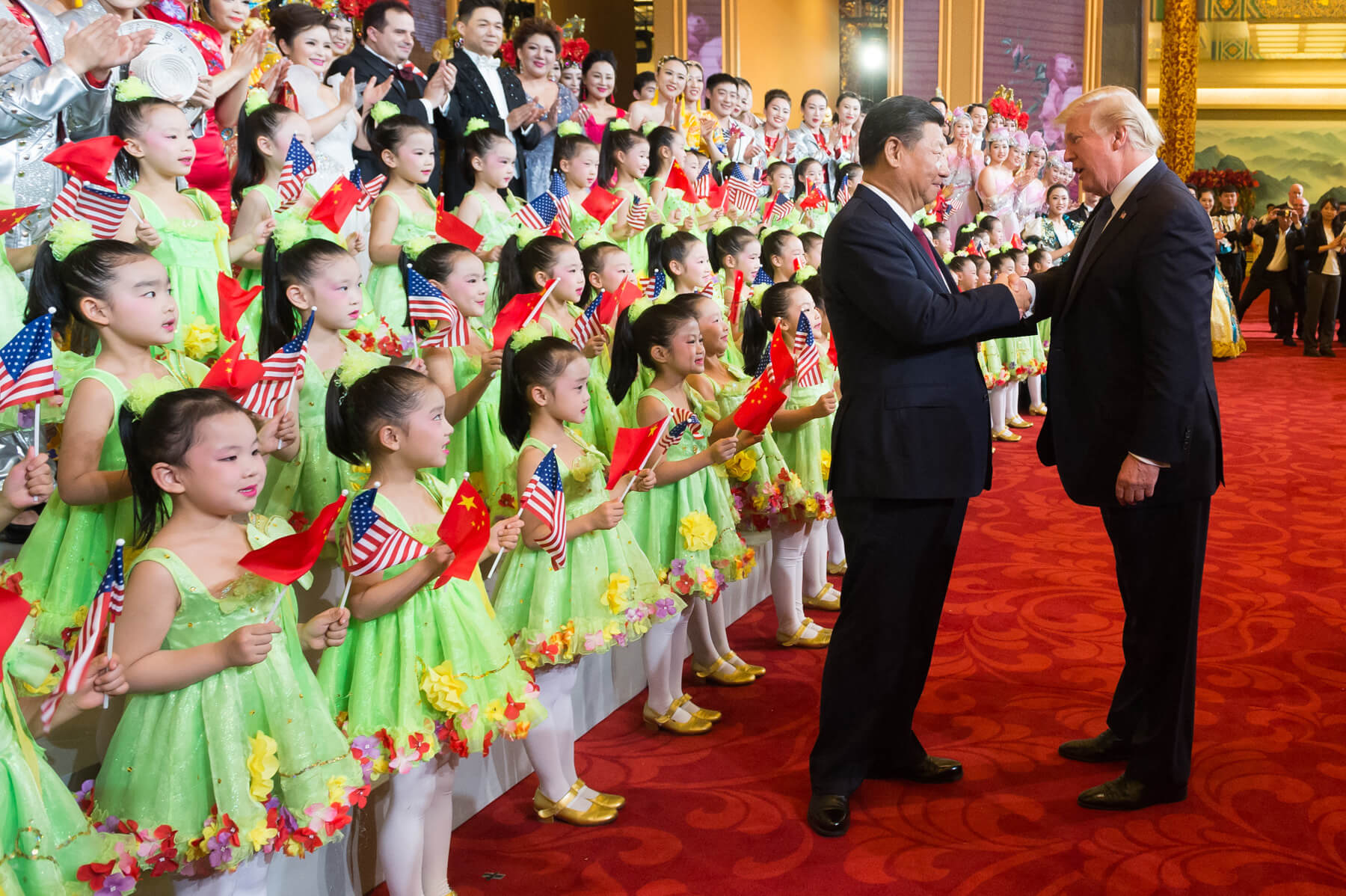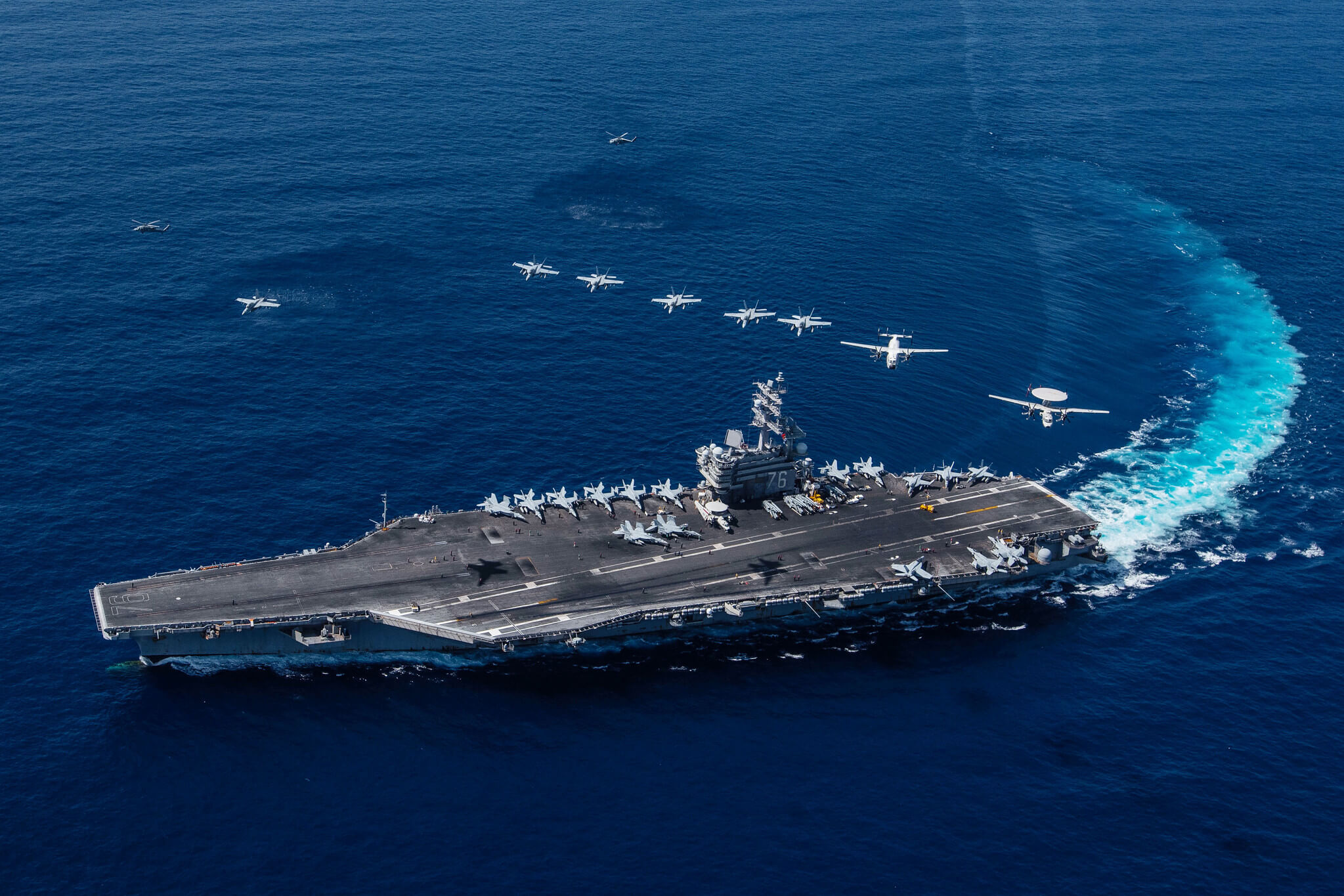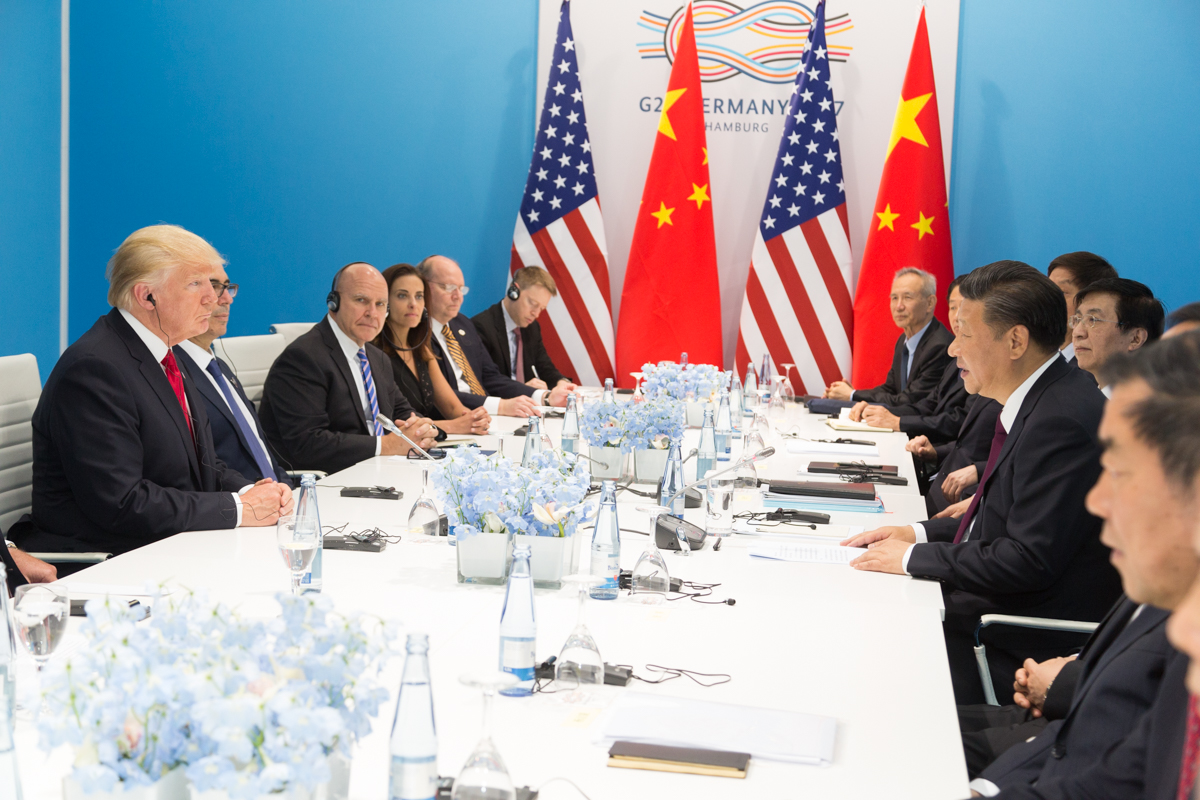Trump Rivals China: Four Years Of Machiavellianism
In the run-up to the 2020 US presidential election, it is time to reflect on the impact of Trump's presidency on various countries across the globe. How do different countries look back upon four years of President Trump? In this opening episode of the Clingendael Spectator series “Four Years Trump: Taking Stock and Looking Forward”, Shi Yinhong explains from a Chinese perspective how Trump sought rivalry with China on all fronts.
Over the past four years, the US has sought rivalry with China on all fronts; from trade and diplomacy, to security and strategy. The aim of the Trump administration has been a “selective decoupling” from China. The recent COVID-19 pandemic has overall toughened Trump’s already assertive China politics. It is most likely that both Great Powers will continue to grow even further apart.
Today’s China-US tensions are the result of several fundamental developments that have deepened over the past twelve years. Most notably, China has begun to formulate its aspirations to play a bigger role on the world stage, after more than 15 years of continued economic growth. This process took flight after the 2008 global financial crisis and the ensuing economic recession, and against the backdrop of the relative decline and dysfunction of the West.
A decisive moment came towards the end of 2012, with the change of top leadership in China, when President Xi Jinping took office. China’s growing national strength and resources were mobilised, underpinned by the ideological belief in the country’s national greatness and the omnipresent leading role of the Communist Party.
With the election of US President Donald Trump in 2016, the rivalry between Beijing and Washington intensified immediately. Still, key elements for such a rivalry were already in place: Strategic and military competition started well before Trump’s presidency, and both the US and the European Union (EU) had already (since 2008) aired their continued complaints (and even anger) on a variety of trade and economic issues. These complaints have gradually become more severe, finally escalating in the current China-US trade war (since July 2018).
Trump’s North Korea Gambit: The Start of Escalation
Throughout 2017, China-US relations were dominated by strategic challenges. President Trump chose to make this relationship a prisoner of a single issue: North Korea’s nuclear and missile development – one of the world’s most intractable problems. Having focused on North Korea, the seemingly amiable China-US relationship (since the Mar-a-Lago Summit of 7 April 2017) came to an abrupt end.1

President Trump’s notoriously wild, volatile, and Machiavellian personality did, of course, not help. At that time, some scholars observed that Trump’s character was inherently an impatient one, which stood in stark contrast to China’s skill and tactic of delay vis-à-vis the North Korea-problem. Clearly, China did not respond to Trump’s demands to North Korea, and as a result the US decided to turn up the pressure on China on other fronts as well.2
From a US perspective, China seemed to be “tamed” by Trump’s extraordinary threats of military strikes against North Korea, combined with “secondary sanctions” against China. China endorsed no less than seven successive escalating sanction resolutions of the UN Security Council against North Korea, bringing the country on the brink of economic collapse.
In turn, Beijing almost exhausted its sanctions arsenal by putting pressure on Pyongyang, taking the considerable political and strategic risk of turning North Korea into China’s permanent enemy.3
During 2017, the Trump administration put further pressure on China, notably by increasing the frequency of so-called Freedom of Navigation Operations (FONOP’s) in the South China Sea. These FONOP’s were intensified and combined with the highly publicised initiative for a quadrilateral (US, Japan, India, Australia) Indo-Pacific strategic coalition, all aimed at checking China’s influence in the South China Sea (as well as other regions).

The Trump administration took a further step by adopting the term “predatory” as the standard adjective to characterise China’s economic practices in the developing world, notably its Belt and Road Initiative (BRI).4
This was part of a new phase in China-US rivalry, since Washington was now also accusing China of acting like a “Sharp Power”: Beijing was allegedly conducting a new ideological drive towards developing countries by using the BRI as a political and ideological lever, and projecting “soft power” to interfere in political process and influence public opinion in industrialised countries.5
A truce in trade relations was achieved partly due to numerous big concessions made by China in its approach towards North Korea
At the trade front, 2017 was a relatively tranquil year in China-US relations. This was rather surprising, since President Trump’s “America First”-approach included countless threats towards China.
A truce in trade relations was achieved partly due to numerous big concessions made by China in its approach towards North Korea. However, this trade truce proved to be the only concrete benefit China would reap from toeing Washington’s line. Behind the quiet façade, numerous problematic and structural trade, economic, and financial problems remained unresolved.
The Trump administration took specific aim at China’s massive trade surplus with the US, and its imperfect market access and continued state control of economic and technological activities. These continued problems have over the years proven to be the solid basis in the US Congress and US public opinion for President Trump’s policy to take “tough action” with China.

During 2017, it became clear that President Trump proved to be a ruthless strategist and tactician in his dealings with China. By initially focusing on the problem of North Korea, Trump combined overwhelming pressure and serious threats, with occasional sweet-talking to gain as many concessions as possible from his main rival: China.
Trump’s Machiavellian Method
Having made optimal use of China’s willingness to put pressure on North Korea, President Trump began to apply the same strategy and tactics of full-out pressure in its economic and trade relationship with China. The US issued a series of brutal threats to impose high tariffs on China’s export to the US, combined with excessive demands aimed at squeezing the maximum amount of concessions from Beijing.
The Trump administration adopted a textbook Machiavellian approach towards China
By early-2018, the Trump administration had adopted a textbook Machiavellian approach towards China, an approach it had earlier taken towards the North Korea problem. As a result, China-US relations quickly escalated into severe rivalry, which lasts till today.
At first, China seemed to have no other option but to acquiesce and accept US demands, making serious concessions by tackling its trade surplus (with the US), and widening its market access. China was keen to avoid a protracted trade war with the US, which would seriously damage its economy.
Beijing therefore decided to adopt (what Trump would label) “structural changes” to its “industrial policies.” Still, China’s concessions proved insufficient to avoid the further escalation of China-US rivalry. In mid-December 2018, the National Security Strategy of the United States of America was published by the White House, identifying China (along with Russia) as America’s main rivals, both today and in the future.
Earlier that year (mid-March), President Trump had already signed the so-called “Taiwan Travel Act”, enabling “legitimate” high-level official visits and direct consultations between the US and Taiwan. Public and (secret) military ties between the US and Taiwan were already close and have deepened even further during the Trump era.
Over the past years, the US has offered significant diplomatic and strategic support to Taiwan. US arms sales to Taiwan have today surpassed US$ 10 billion, and the frequency of passage of US naval warships through the Taiwan Strait has increased to nearly once every month.

Apart from Taiwan, the situation in Hong Kong has also proven a major bone of contention in China-US relations. Toward the end of November 2019, President Trump signed a bill – after the US Congress unanimously passed it – to interfere in the violent Hong Kong situation.
US interference in Hong Kong is bound to have negative economic consequences for China: If Hong Kong’s special role as a major intermediary (in trade and finance) between China and the global economy is impaired due to US legislation, China’s economy and financial position could well be damaged, perhaps even seriously.
Against the backdrop of growing tensions over Taiwan and Hong Kong, a China-US trade war was steadily growing after early-July 2018. China and the US reached a Phase I bilateral trade deal in January 2020, but this could only be regarded as a modest attempt to de-escalate a conflict that has been boiling over during the past two years.
A possible Part II of the China-US trade deal will remain problematic, and therefore unlikely
For now, it remains unclear whether China and the US are prepared to make the requisite concessions, with the Trump administration’s calling for “structural change” in China’s economy, and China demanding canceling US high tariffs. Since the Trump administration does not seem to be inclined to lift the 25% tariffs (valued at US$ 250 billion) it has levied against China since 2018, a possible Part II of the China-US trade deal will remain problematic, and therefore unlikely.6
This short overview indicates that the Trump administration has set major strides in its policy of “selective decoupling” from China, first and foremost on trade and economics. But “selective decoupling” also takes place in other key areas, including:
- Official, civilian and corporate exchanges, regarding strategically significant high-tech (e.g. artificial intelligence, nanotechnology and biotechnology, robotics, and quantum computing);
- Cyberspace and telecommunications which are vitally important for national strategic military capability and national security;
- Strategic armed forces and related military exchanges; and
- Major connections perceived as projecting the “power of attraction” in political systems and ideologies in the society of third countries (also known as “soft power”); for example: China’s official media institutions in US, and American media in China.
The main goal of the Trump administration is clear: preventing China (or any other country, for that matter) from challenging and subverting the US in the four key areas mentioned above.
COVID-19 and China-US relations
China’s totally centralised political leadership system has decisively beaten back the COVID-19 epidemic, be it at a massive economic and social cost. China’s political system – characterised among other things by tight control of (national) information and centralised financial institutions – will be relied on for dealing with the consequences of this epidemic.
During the COVID-19 crisis, China’s economic and military objectives related to the Belt and Road Initiative, have taken second place
China’s self-claimed superior political system and its victory in the combat against the COVID-19 virus have boosted China’s aspiration as an entitled world leader in the domain of global public health. This has now become a new priority in China’s foreign policy and is supported by increased propaganda and foreign aid efforts. During the COVID-19 crisis, China’s economic and military objectives related to the Belt and Road Initiative, have taken second place.

The pandemic has put limits to resources that are available to China. This also applies to the US, since the COVID-19 virus is bound to hamper US strategic deployment capabilities in the East Asia-Pacific region. US FONOP’s in the South China Sea; US naval warships through the Taiwan Straits; military US-led actions targeting China in the East China Sea and beyond; strategic coalition-building with Japan, Australia, and India in the Indo-Pacific; reinforcing strategic-military cooperation with Taiwan; and comprehensive technological renewal and upgrades of the US strategic armed forces, are all silently reduced, slowed, or paused – at least for the time being.
For now, the US and its major allies remain overwhelmed by the COVID-19 pandemic, mainly due to their previous complacency, under-preparedness, and the apparent inefficiency of decentralised liberal democratic systems in dealing with emergencies of this kind, at least in short-term.
This applies especially to the US, which has become the epicentre of the COVID-19 pandemic (US casualties have now surpassed the number of several stricken Western European countries). A nation-wide shutdown of the US economy has resulted in no less 30 million lost jobs in six weeks, while the US$ 2.2 trillion bailout legislation may only keep the US economy afloat for three months – according to the Secretary of Treasury Steve Mnuchin.7
The “war of words” between China and the US will continue to be waged with ferocity
Against this backdrop, it is little surprise that the political-ideological front in China-US relations is complicated. The Trump administration continues to contain and push back China’s projection of “soft power” vis-à-vis the US (e.g., by defining China’s official news agencies as “foreign mission” and expelling no less than 160 Chinese journalists from the US).
Today, Trump’s White House is directed by anti-China “hawks”, dominating the control of the narrative. President Trump has declared that he would no longer use the phrase “China virus” or “Wuhan virus.” Still, accusations of China’s “covering up”, “disinformation”, and even as the “origin of pathogen”, have become standard talking points in Trump’s attack on China. The “war of words” between China and the US will therefore continue to be waged with ferocity.8
Looking Forward
US jealousy and antagonism vis-à-vis China seem deeply entrenched and are intensifying due to the nation-wide resentment at China’s alleged “cover-up” and “disinformation.” US Secretary of State Pompeo has recently (13 April and again on May 3) threatened that accounts will have to be settled about the origin of the COVID-19 pandemic, which should include a thorough inquiry.9
China is confident that it can rely on a functioning, increasingly centralised system, whereas the Trump administration remains confused about the effectiveness of its constitutional liberal democracy
This will only speed up the “selective decoupling” – both physically and psychologically. The COVID-19 pandemic will inevitably disrupt many crucial global supply chains, and draconian restrictions of international travel will only accelerate this trend of decoupling. The COVID-19 pandemic therefore poses major difficulties to China, and will make it hard to pick up its usual economic growth.
Yet China is confident that it can rely on a functioning, increasingly centralised system, whereas the Trump administration remains confused about the effectiveness of its constitutional liberal democracy. Given these realities, it is likely that both countries will grow further apart over the coming years.
All authors of this Clingendael Spectator series will grade the impact of the Trump administration on the relation with their country in the scorecard below.
- 1Cf. Steven Lee Myers and Sui-Lee Wee, ‘With Provocative Moves, U.S. Risks Unraveling Gains with China’, The New York Times, 30 June 2017; John Pomfret, ‘Trump and China: The Honeymoon Is Over’, The Washington Post, 25 June 2017.
- 2Paul Gewirtz, ‘How China Misread Donald Trump’, PoliticoMagazine, 6 July 2017.
- 3See, for example ‘Xi’s Move to Punish North Korea to Buy Time with Trump on Trade’, Bloomberg, 7 August 2017.
- 4Nicole Gaouette, ‘Tillerson Raps China as “Predatory” Rule Breaker’, CNN, 19 October 2017.
- 5Conor Finnegan, ‘VP Pence Paints China as Foremost Threat to U.S.: “We Will Not Be Intimidated”’, ABC News, 5 October 2018.
- 6Cf. Kevin Freking, ‘White House Adviser Compares China Trade Talks to Cold War’, Associate Press, 7 September 2019.
- 7 ‘Mnuchin Says Senate Stimulus Package Will Keep Economy Running for Three Months’, CBS News, 26 March 2020.
- 8See, for example, Josh Campbell, Kylie Atwood, and Evan Perez, ‘US Explores Possibility that Coronavirus Started in Chinese Lab, Not a Market’, CNN, 16 April 2020; Bret Baier and Gregg Re, ‘Sources Believe Coronavirus Outbreak Originated in Wuhan Lab as Part of China’s Efforts to Compete with US’, Fox News, 16 April 2020; Jason Hoffman, ‘Trump Says US Wants Investigators to Go to China’, CNN, 20 April 2020.
- 9Jennifer Hansler, ‘Pompeo: “There’ll Be A Time for Recriminations” over the Novel Coronavirus’, CNN, 14 April 2020; Kylie Atwood, Stephen Collinson, and Kevin Bohn, CNN, 3 May 2020.



